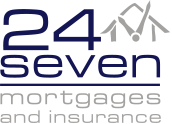Types of Loans
There are many different 'types of loans' or more officially known as 'loan structures' available ....By working with your Mortgage Adviser at 24seven Mortgages we will listen to what you aim to achieve - your goals and lifestyle choices - to help you choose the right loan structure that will suit your current lifestyle and future needs...
TIP:
Consider your options carefully - choosing the wrong type of mortgage could cost you thousands- fill out an enquiry form - or give us a call ...chat to one of our friendly team todayLoan Structures
There are many types of loan structures, each with its own interest rate, fees and flexibility, therefore this can be very confusing to most people. All these factors affect how much the loan costs you and when it will be paid off. Your interest rate may be fixed, floating or a mix of both. And there are different repayment structures to choose between.The advantage of working with 24seven Mortgages we will be able to assist you to make that right decision for your current and future lifestyle plans and needs.
Fixed Rate Home Loan
With a fixed rate home loan the interest rate you pay is fixed for a period of six months to five years. At the end of the term, you can choose to re-fix again for a new term or move to a floating rate.Advantages:
- You know exactly how much each repayment will be over the term
- Lenders often compete with fixed rate specials
- You can lock in lower rates if market interest rates are rising
Disadvantages:
- Fixed rates often have limits on how much you can lift repayments or make lump sum payments without paying charges
- If you take a long term, there is a risk floating rates may drop below your fixed rate
- If you choose to sell your property and/or break your fixed loan you may be charged ‘break fees’
Interest-only
You pay the interest-only part of your repayments, not the principal, so the payments are lower. Some borrowers take an interest-only loan for a year or two and then switch to a table loan. The normal table loan application fees apply.Advantages:
- You have more cash for other things, such as renovations
- You will still owe the full amount that you borrowed until the interest-only period ends and you start paying back the loan
Disadvantages:
Floating rate (or variable rate)
Lenders of floating rate loans will lift or lower the interest rate as interest rates in the wider market change, normally linked to the Official Cash Rate (OCR). This means your repayments may go up or down.Advantages
- You have greater flexibility to make changes without penalty, such as paying off the loan early or changing the loan term
- It’s easier to consolidate other costlier debt into floating rate loans by borrowing more
- Right now, floating rates are lower than most fixed rates
- When rates go up the repayments also go up, putting a squeeze on your budget.
- A mix of fixed and floating
- You can split a loan between fixed and floating rates. This lets you make extra repayments without charge on the floating rate portion.
- Splitting your loan can give you a balance between the certainty of a fixed rate and the flexibility of a floating rate. How much of your loan you have in each portion depends on which of these is more important to you.
- Table loans provide the discipline of regular payments and a set date when they will be paid off.
- They provide the certainty of knowing what payments will be, unless you have a floating rate, in which case repayment amounts can change.
- Fixed regular payments might be difficult for people with irregular income.
- You pay less interest overall than with a table loan because early payments include a higher repayment of principal.
- These may suit borrowers who expect their income to drop, for example, if one partner plans to give up work in a few years time.
- Some lenders allow you to make either weekly, fortnightly or monthly payments (you can choose straight line repayments on Fixed Rate or Floating Rate Home Loans.)Lemons
- If you can afford higher payments you would be better to take a table loan with payments high for the whole term, so you’ll pay less interest.
- If you're well organised, you can pay off your mortgage faster. This also suits people with uneven income as there are no fixed repayments
- Putting surplus funds into this account rather than a separate savings account will give bigger interest savings and also avoids the tax on the savings account interest
- You need discipline.
- It can be tempting to always spend up to your credit limit and stay in debt longer
- There can be a fee for the day-to-day banking transactions you do through the account
Disadvantages:
Floating rates have historically been higher than fixed rates –Capped rates
Capped Rates are a variation where the interest rate can’t rise, but will drop if floating rates drop below the capped rate.Repayment structure
Table loan
This is the most common type of home loan. You can choose a term up to 30 years with most lenders. Most of your early repayments pay off the interest, while most of the later payments pay off the principal (the lump sum you borrowed). NOTE: You can take a table loan with a fixed rate of interest or a floating rate.Application fees for table loans range from nothing to over $1,000. Most lenders charge around $200 to $500. This is sometimes negotiable.
Advantages
Disadvantages:
Reducing or Straight Line loan
Reducing or straight line mortgages repay the same amount of principal with each repayment, but a reducing amount of interest each time. These are quite rare in New Zealand. Payments start high, but reduce (in a straight line) over time. Fees are similar to table loans.Advantages
Disadvantages:
Revolving credit loan
Revolving credit loans work like a large overdraft. Your pay goes straight into the account and bills are paid out of the account when they’re due. By keeping the loan as low as you can at any time, you pay less interest because lenders calculate interest daily. You can make lump sum repayments and re-draw money up to your limit. Some revolving credit mortgages gradually reduce the credit limit to help you pay off the mortgage. (Application fees on revolving credit home loans can be up to $500)Advantages:
Disadvantages:
Home Page...





